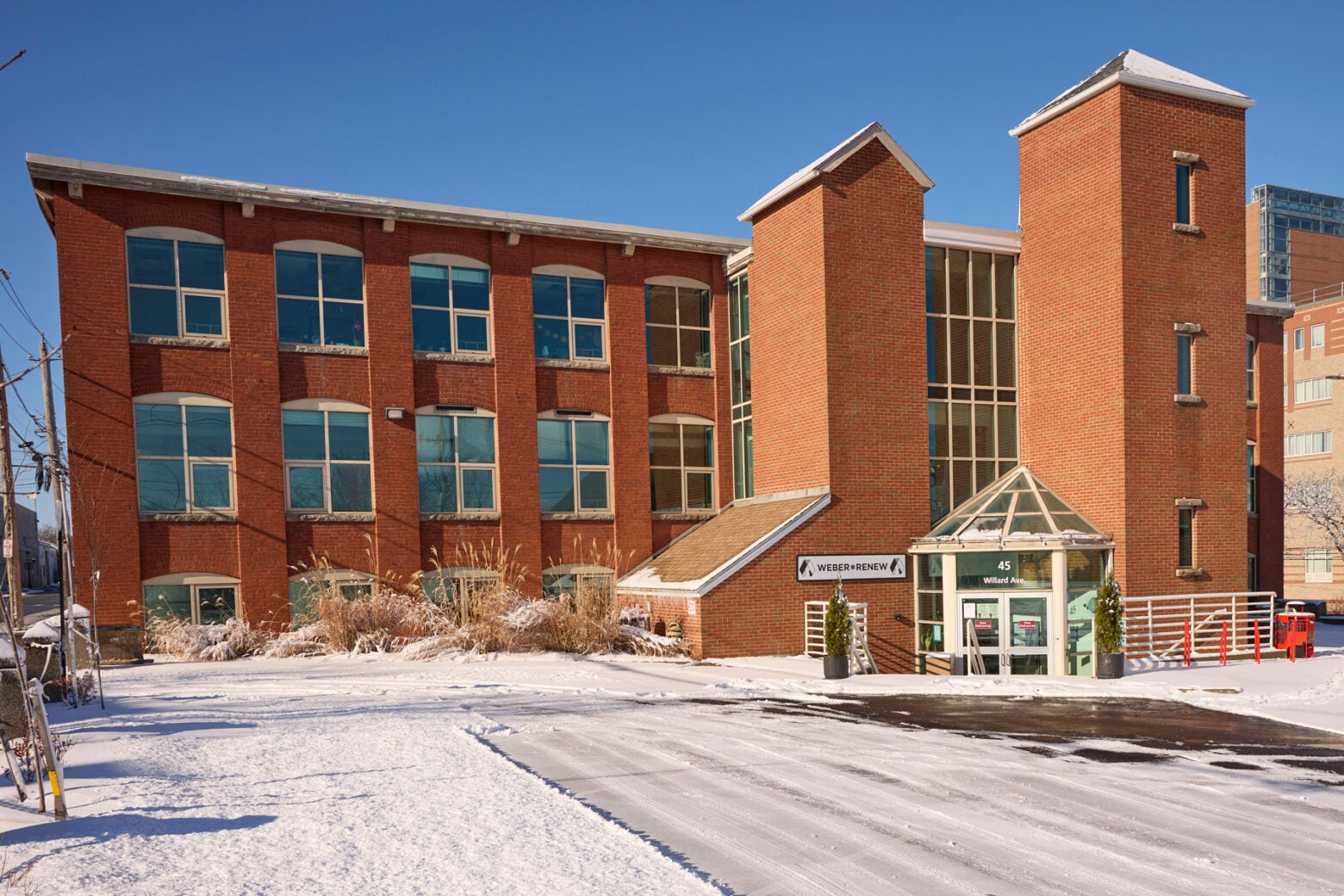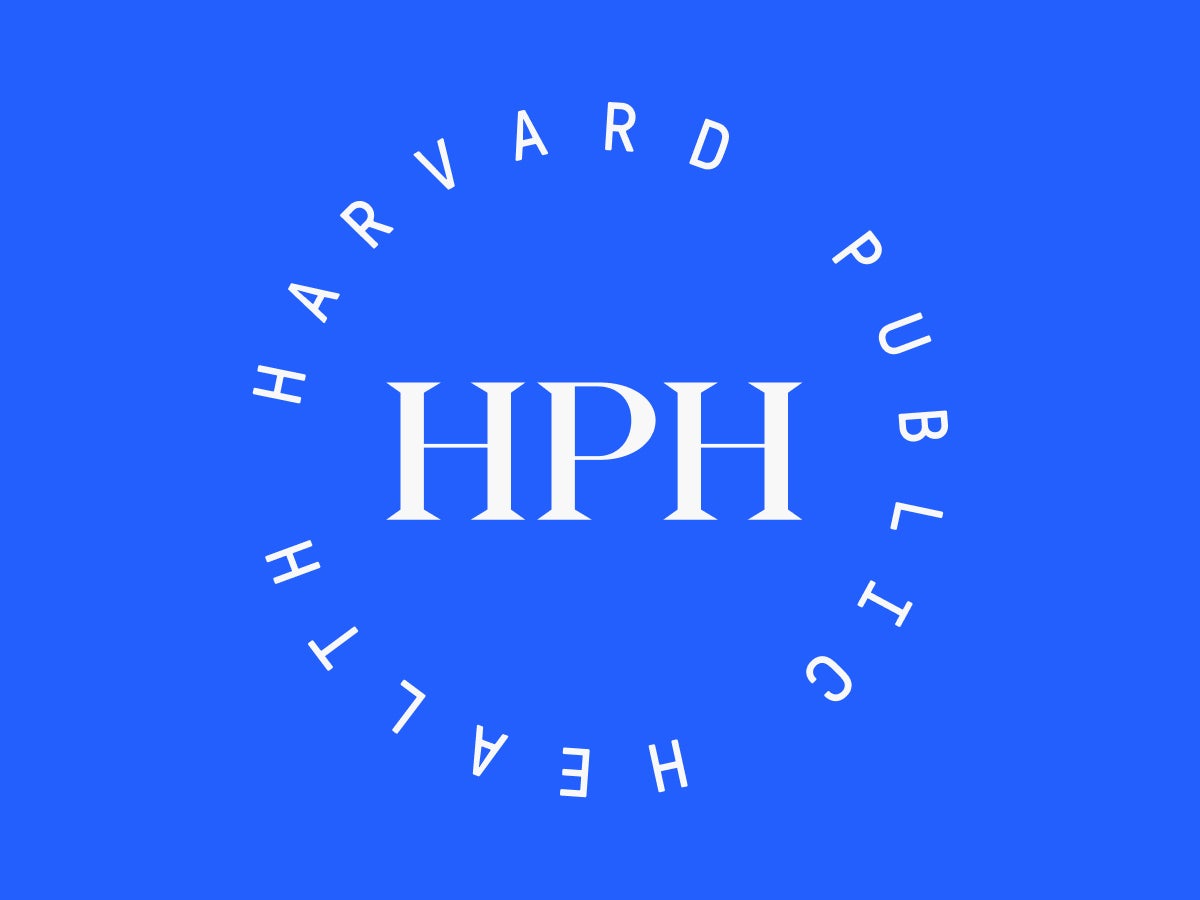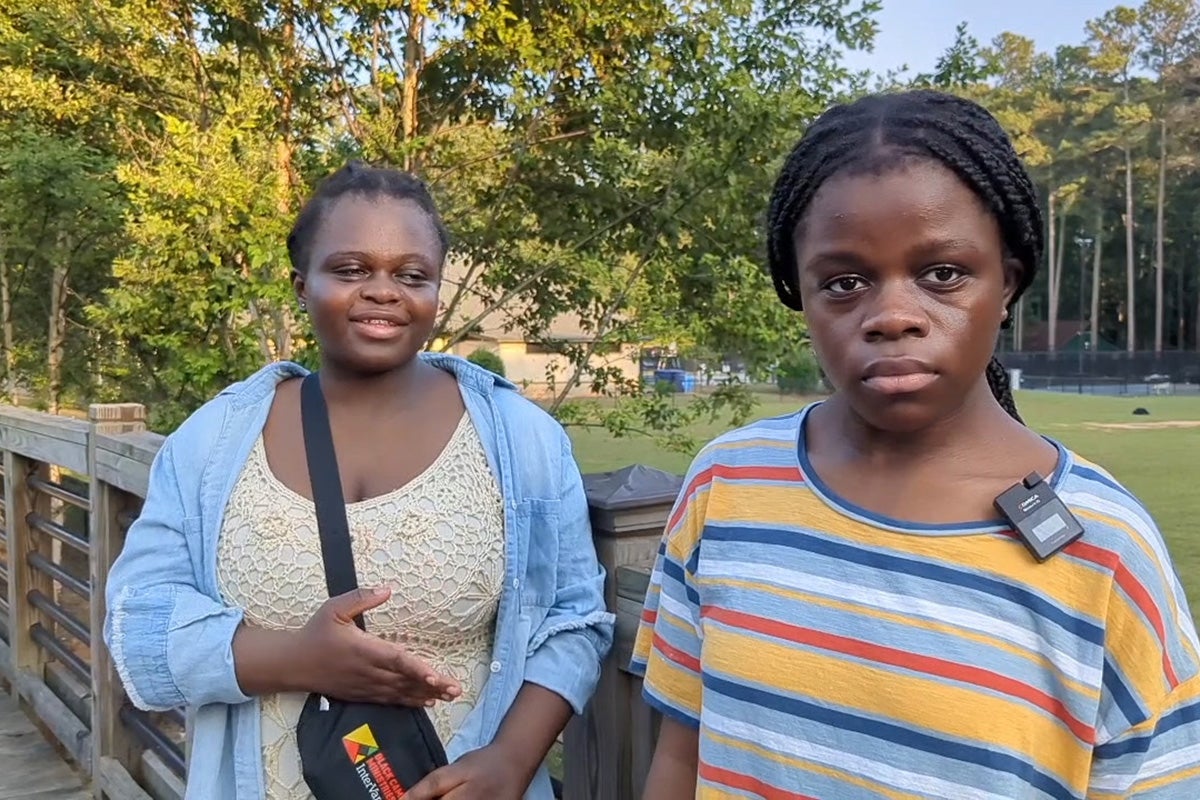
Overdose prevention center Project Weber/RENEW in Providence, Rhode Island. It is the third such site in the U.S. and the first authorized by a state law. Kent Dayton
Research
Do overdose prevention centers work in the U.S.? Researchers want to know
An overdose prevention center opening its doors this month in Providence, Rhode Island could offer important insights into how these centers might reduce the harms of opioid addiction in the United States. The center, run by the nonprofit Project Weber/RENEW and funded by money received from legal settlements with opioid makers, is the third such site in the U.S. and the first authorized by a state law.
In overdose prevention centers, people are allowed to use illicit drugs obtained elsewhere, under the watchful eyes of staffers who will rescue them if they overdose. They also provide: a safe place to hang out, get a snack, and meet with peers in recovery; clean syringes and other supplies to prevent infections; and referrals to medical care, including addiction treatment. In Providence, there’s even a treatment center in the same building.
Whether this approach works to reduce overdose deaths is among the questions researchers will examine through a grant from the National Institutes of Health, which also encompasses two centers that opened in New York City in 2021. Studies conducted at more than 200 overdose prevention centers around the world have consistently shown that these facilities save lives, says Brandon Marshall, the principal investigator for the Providence study. Marshall is a professor of epidemiology at the Brown University School of Public Health. “We don’t know exactly how they work in the United States,” he says, because the healthcare system is different. And most of the research has been conducted in large cities like Sydney, Berlin, and Toronto, not smaller municipalities like Providence.
Marshall spoke with Harvard Public Health’s Felice J. Freyer. Their conversation has been edited and condensed.
HPH: What questions do you hope your research will answer?
Marshall: We’d like to understand the impact that overdose prevention centers have on the health of people who use these facilities. We’re enrolling 500 people in Rhode Island and 500 in New York City—people from the overdose prevention center directly and people who use syringe service programs but not OPCs. That will allow us to look at the differences in health outcomes over time between people who use overdose prevention programs and people who are using more traditional harm reduction services.
The second question [we’re asking] is the impact that overdose prevention centers have on the neighborhoods in which they’re located, such as whether the number of non-fatal overdoses changes.
Third, we’re going to be speaking with people who use these sites and the staff who work at them to understand facilitators and barriers to use of the facility.
And the final question: We want to understand how much overdose prevention centers cost to start up and operate in the United States, and what are some of the potential cost savings. We hypothesize that overdose prevention centers save money by preventing emergency department encounters for overdose and hospitalizations.
HPH: Other than being in a small city, is there anything else that’s unique about the Providence facility?
Marshall: There is. It’s directly beside our largest tertiary care center, Rhode Island Hospital. That provides a two-way pathway for folks. A lot of people get discharged from the emergency department after experiencing an overdose, with very little resources and connections to care. We would like to study the extent to which people could be discharged directly to the overdose prevention center. And we will also be studying whether people who use the overdose prevention center then access more advanced care in the hospital setting—say, for severe skin and soft tissue infections.
HPH: Discussions about opening overdose prevention centers have occurred in many other locations. What’s different about the places that have succeeded in building these centers?
Marshall: Some common themes are emphasizing their scientific benefits, developing diverse coalitions of stakeholders inside and outside the overdose prevention space, and then prioritizing transparency, building public trust. We’re a small state, and so almost everyone in Rhode Island has some connection to the overdose crisis. That gives it a sense of urgency.
It also takes courage and leadership. Politically, we’ve had strong advocates here in Rhode Island in both the executive branch and the legislative branch. In Providence, the city council unanimously approved the location. In a recent community survey of 125 residents and people who work in the area, we found that 75 percent support having an overdose prevention center in their neighborhood. People understand this as primarily a health care intervention.
HPH: Many people consider overdose prevention sites illegal under federal law. President Trump’s pick for Secretary of Health and Human Services, Robert F. Kennedy Jr., has said he would try “anything that works,” but also spoke of increasing the role of law enforcement. Are you worried that the Trump administration will try to shut it down?
Marshall: If they do proceed, it would likely involve a lawsuit between the federal government and the state. It would play out in the courts. The incoming administration has not clearly articulated a drug overdose policy. Kennedy has expressed openness to overdose prevention centers in the past, but at the same time, [he has made] concerning comments around rolling back the clock to a more punitive approach. We just have to wait and see where this goes in 2025.
HPH: Meanwhile, in Rhode Island and most states, the overdose death rate has started declining significantly. Will the need for overdose prevention centers also decline in the near future?
Marshall: I would love to see a world where we don’t need so many services because we have successfully addressed the overdose crisis. We are nowhere near that point. Even though overdose deaths are going down, they remain greatly above pre-pandemic levels. Overdose prevention centers still are very much needed.
Republish this article
<p>The first state-approved site in the U.S. will be part of a study on how they affect opioid outcomes.</p>
<p>Written by Felice J. Freyer</p>
<p>This <a rel="canonical" href="https://harvardpublichealth.org/policy-practice/do-overdose-prevention-centers-work-in-the-u-s/">article</a> originally appeared in <a href="https://harvardpublichealth.org/">Harvard Public Health magazine</a>. Subscribe to their <a href="https://harvardpublichealth.org/subscribe/">newsletter</a>.</p>
<p class="has-drop-cap">An overdose prevention center opening its doors this month in Providence, Rhode Island could offer important insights into how these centers might reduce the harms of opioid addiction in the United States. The center, run by the nonprofit Project Weber/RENEW and funded by money received from legal settlements with opioid makers, is the third such site in the U.S. and the first authorized by a state law.</p>
<p>In overdose prevention centers, people are allowed to use illicit drugs obtained elsewhere, under the watchful eyes of staffers who will rescue them if they overdose. They also provide: a safe place to hang out, get a snack, and meet with peers in recovery; clean syringes and other supplies to prevent infections; and referrals to medical care, including addiction treatment. In Providence, there’s even a treatment center in the same building.</p>
<p>Whether this approach works to reduce overdose deaths is among the questions researchers will examine through a grant from the National Institutes of Health, which also encompasses two centers that opened in New York City in 2021. Studies conducted at more than 200 overdose prevention centers around the world have consistently shown that these facilities save lives, says Brandon Marshall, the principal investigator for the Providence study. Marshall is a professor of epidemiology at the Brown University School of Public Health. “We don’t know exactly how they work in the United States,” he says, because the healthcare system is different. And most of the research has been conducted in large cities like Sydney, Berlin, and Toronto, not smaller municipalities like Providence.</p>
<p>Marshall spoke with <em>Harvard Public Health’s</em> Felice J. Freyer. Their conversation has been edited and condensed.</p>
<p><strong>HPH:</strong> What questions do you hope your research will answer?</p>
<p><strong>Marshall:</strong> We'd like to understand the impact that overdose prevention centers have on the health of people who use these facilities. We're enrolling 500 people in Rhode Island and 500 in New York City—people from the overdose prevention center directly and people who use syringe service programs but not OPCs. That will allow us to look at the differences in health outcomes over time between people who use overdose prevention programs and people who are using more traditional harm reduction services.<s></s></p>
<p>The second question [we’re asking] is the impact that overdose prevention centers have on the neighborhoods in which they're located, such as whether the number of non-fatal overdoses changes.</p>
<p>Third, we're going to be speaking with people who use these sites and the staff who work at them to understand facilitators and barriers to use of the facility.</p>
<p>And the final question: We want to understand how much overdose prevention centers cost to start up and operate in the United States, and what are some of the potential cost savings. We hypothesize that overdose prevention centers save money by preventing emergency department encounters for overdose and hospitalizations.</p>
<p><strong>HPH: </strong>Other than being in a small city, is there anything else that's unique about the Providence facility?</p>
<p><strong>Marshall:</strong> There is. It's directly beside our largest tertiary care center, Rhode Island Hospital. That provides a two-way pathway for folks. A lot of people get discharged from the emergency department after experiencing an overdose, with very little resources and connections to care. We would like to study the extent to which people could be discharged directly to the overdose prevention center. And we will also be studying whether people who use the overdose prevention center then access more advanced care in the hospital setting—say, for severe skin and soft tissue infections.</p>
<p><strong>HPH:</strong> Discussions about opening overdose prevention centers have occurred in many other locations. What's different about the places that have succeeded in building these centers?</p>
<p><strong>Marshall:</strong> Some common themes are emphasizing their scientific benefits, developing diverse coalitions of stakeholders inside and outside the overdose prevention space, and then prioritizing transparency, building public trust. We're a small state, and so almost everyone in Rhode Island has some connection to the overdose crisis. That gives it a sense of urgency.</p>
<p>It also takes courage and leadership. Politically, we've had strong advocates here in Rhode Island in both the executive branch and the legislative branch. In Providence, the city council unanimously approved the location. In a recent community survey of 125 residents and people who work in the area, we found that 75 percent support having an overdose prevention center in their neighborhood. People understand this as primarily a health care intervention.</p>
<p><strong>HPH</strong>: Many people consider overdose prevention sites illegal under federal law. President Trump’s pick for Secretary of Health and Human Services, Robert F. Kennedy Jr., has said he would try “anything that works,” but also spoke of increasing the role of law enforcement. Are you worried that the Trump administration will try to shut it down?</p>
<p><strong>Marshall:</strong> If they do proceed, it would likely involve a lawsuit between the federal government and the state. It would play out in the courts. The incoming administration has not clearly articulated a drug overdose policy. Kennedy has expressed openness to overdose prevention centers in the past, but at the same time, [he has made] concerning comments around rolling back the clock to a more punitive approach. We just have to wait and see where this goes in 2025.</p>
<p><strong>HPH:</strong> Meanwhile, in Rhode Island and most states, the overdose death rate has started declining significantly. Will the need for overdose prevention centers also decline in the near future?</p>
<p class=" t-has-endmark t-has-endmark"><strong>Marshall:</strong> I would love to see a world where we don't need so many services because we have successfully addressed the overdose crisis. We are nowhere near that point. Even though overdose deaths are going down, they remain greatly above pre-pandemic levels. Overdose prevention centers still are very much needed.</p>
<script async src="https://www.googletagmanager.com/gtag/js?id=G-S1L5BS4DJN"></script>
<script>
window.dataLayer = window.dataLayer || [];
if (typeof gtag !== "function") {function gtag(){dataLayer.push(arguments);}}
gtag('js', new Date());
gtag('config', 'G-S1L5BS4DJN');
</script>
Republishing guidelines
We’re happy to know you’re interested in republishing one of our stories. Please follow the guidelines below, adapted from other sites, primarily ProPublica’s Steal Our Stories guidelines (we didn’t steal all of its republishing guidelines, but we stole a lot of them). We also borrowed from Undark and KFF Health News.
Timeframe: Most stories and opinion pieces on our site can be republished within 90 days of posting. An article is available for republishing if our “Republish” button appears next to the story. We follow the Creative Commons noncommercial no-derivatives license.
When republishing a Harvard Public Health story, please follow these rules and use the required acknowledgments:
- Do not edit our stories, except to reflect changes in time (for instance, “last week” may replace “yesterday”), make style updates (we use serial commas; you may choose not to), and location (we spell out state names; you may choose not to).
- Include the author’s byline.
- Include text at the top of the story that says, “This article was originally published by Harvard Public Health. You must link the words “Harvard Public Health” to the story’s original/canonical URL.
- You must preserve the links in our stories, including our newsletter sign-up language and link.
- You must use our analytics tag: a single pixel and a snippet of HTML code that allows us to monitor our story’s traffic on your site. If you utilize our “Republish” link, the code will be automatically appended at the end of the article. It occupies minimal space and will be enclosed within a standard <script> tag.
- You must set the canonical link to the original Harvard Public Health URL or otherwise ensure that canonical tags are properly implemented to indicate that HPH is the original source of the content. For more information about canonical metadata, click here.
Packaging: Feel free to use our headline and deck or to craft your own headlines, subheads, and other material.
Art: You may republish editorial cartoons and photographs on stories with the “Republish” button. For illustrations or articles without the “Republish” button, please reach out to republishing@hsph.harvard.edu.
Exceptions: Stories that do not include a Republish button are either exclusive to us or governed by another collaborative agreement. Please reach out directly to the author, photographer, illustrator, or other named contributor for permission to reprint work that does not include our Republish button. Please do the same for stories published more than 90 days previously. If you have any questions, contact us at republishing@hsph.harvard.edu.
Translations: If you would like to translate our story into another language, please contact us first at republishing@hsph.harvard.edu.
Ads: It’s okay to put our stories on pages with ads, but not ads specifically sold against our stories. You can’t state or imply that donations to your organization support Harvard Public Health.
Responsibilities and restrictions: You have no rights to sell, license, syndicate, or otherwise represent yourself as the authorized owner of our material to any third parties. This means that you cannot actively publish or submit our work for syndication to third-party platforms or apps like Apple News or Google News. Harvard Public Health recognizes that publishers cannot fully control when certain third parties aggregate or crawl content from publishers’ own sites.
You may not republish our material wholesale or automatically; you need to select stories to be republished individually.
You may not use our work to populate a website designed to improve rankings on search engines or solely to gain revenue from network-based advertisements.
Any website on which our stories appear must include a prominent and effective way to contact the editorial team at the publication.
Social media: If your publication shares republished stories on social media, we welcome a tag. We are @PublicHealthMag on X, Threads, and Instagram, and Harvard Public Health magazine on Facebook and LinkedIn.
Questions: If you have other questions, email us at republishing@hsph.harvard.edu.


